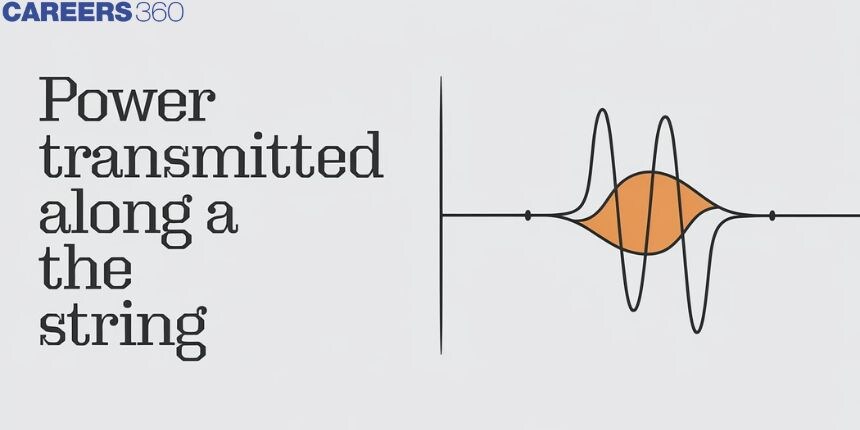Power Transmitted Along The String
When a wave travels through a string, energy is transferred from one point to another, carried by the wave's oscillations. This phenomenon can be seen in various real-life situations, such as the strings of a guitar vibrating to produce sound or the transmission of signals through fibre optic cables. In both cases, the efficient transmission of energy is essential. By analyzing the factors that affect power transmission, such as tension, wave speed, and amplitude, we can optimize systems in fields ranging from musical instruments to telecommunications, ensuring that energy is conveyed effectively and without loss. In this article, we will cover the concept of power transmitted along the string with solved examples.
JEE Main 2025: Physics Formula | Study Materials | High Scoring Topics | Preparation Guide
JEE Main 2025: Syllabus | Sample Papers | Mock Tests | PYQs | Study Plan 100 Days
NEET 2025: Syllabus | High Scoring Topics | PYQs

Power Transmitted Along the String
As a sinusoidal wave moves down a string, the energy associated with one wavelength on the string is transported down the string at the propagation velocity v. From the basic wave relationship the distance travelled in one period is vT = λ, so the energy is transported one wavelength per period of the oscillation.

The energy associated with one wavelength of the wave is
so the power transmitted would be :
where
The Intensity of the Wave
The intensity of a wave refers to the amount of energy the wave transmits per unit area perpendicular to the direction of propagation, typically measured in watts per square meter (W/m²). It is a crucial parameter that determines the strength and impact of a wave, whether it's sound, light, or any other type of wave. The intensity is directly proportional to the square of the wave's amplitude, meaning that even small increases in amplitude can lead to significant increases in intensity.
The flow of energy per unit area of the cross-section of the string in the unit time is known as the intensity of the wave.
And using
we get
using
We get
And now using
we get
Where
Solved Example Based On Power Transmitted Along The String
Example 1: A stretched rope has linear mass density
1) 512
2) 251
3) 215
4) 521
Solution:
Rate of energy transfer on a string by a sinusoidal wave
wherein
After solving,
Hence, the answer is the option (1).
Example 2: The prong of an electrically operated tuning fork is connected to a long string of
1)
2)
3)
4)
Solution:
Rate of energy transfer on a string by a sinusoidal wave
wherein
Hence, the answer is the option (2).
Example 3: Sinusoidal waves 5 cm in amplitude are to be transmitted along a string having a linear mass density equal to
1) 30
2) 50
3) 45
4) 62
Solution:
Hence, the answer is the option (1).
Example 4:
If the amplitude of sound is doubled and the frequency reduced to one-fourth, the intensity of sound at the same point will be
1) Increased by a factor of 2
2) Decreased by a factor of 2
3) Decreased by a factor of 4
4) unchanged
Solution
The intensity of the wave
Hence, the answer is the option (3).
Example 5: A string 9 m long and fixed at its ends is driven by a 270 Hz vibrator. The string vibrates in its Fifth harmonic mode. The speed of the wave and its fundamental frequency
1) 54Hz
2) 56Hz
3) 57Hz
4) 58Hz
Solution

Hence, the answer is the option (1).
Summary
The power transmitted along a string and the intensity of a wave are key concepts in wave dynamics, influencing how energy is transferred through mediums like strings or cables. The relationship between wave parameters—such as tension, amplitude, and frequency—directly affects the energy and intensity of the wave. By understanding and applying these principles, one can optimize systems for efficient energy transmission, as demonstrated in various solved examples.
Also Read
26 Sep'24 11:43 AM
25 Sep'24 05:36 PM
25 Sep'24 05:35 PM
25 Sep'24 05:34 PM
25 Sep'24 05:34 PM
25 Sep'24 05:33 PM
25 Sep'24 05:32 PM
25 Sep'24 03:55 PM
25 Sep'24 03:54 PM
25 Sep'24 03:53 PM